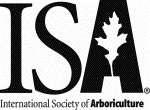
| Current Articles |
| Browse Archives |
| Search |
| Contact Us |
| AUF Home |
 |
Arboriculture & Urban Forestry Online
| Volume 33, Issue 2 —
March 2007
https://www.isa-arbor.com/Publications/Arboriculture-Urban-Forestry |
|
Hurricanes and the Urban Forest: I. Effects on Southeastern United States Coastal Plain Tree Species (View PDF) Mary L. Duryea, Eliana Kampf, and Ramon C. Littell Abstract: Several hurricanes struck Florida, U.S. in 2004 and 2005 causing widespread damage to urban and rural areas. We measured the impacts of five of these hurricanes on the urban forest and combined these results with four other hurricanes to present an assessment of wind resistance for southeastern United States coastal plain tree species. Urban forest loss was positively correlated with wind speed. Tree species demonstrating the highest survival in winds were sand live oak (Quercus geminata), American holly (Ilex opaca), southern magnolia (Magnolia grandiflora), live oak (Quercus virginiana), wax myrtle (Myrica cerifera), sweetgum (Liquidambar styraciflua), crapemyrtle (Lagerstroemia indica), dogwood (Cornus florida), and sabal palm (Sabal palmetto). In a statistical comparison of sand live oak, live oak, and laurel oak (Quercus laurifolia) survival after four panhandle hurricanes, laurel oak had significantly poorer survival than both live oak and sand live oak. Among all species, larger trees lost more branches than medium and smaller trees. Leaf loss had a positive relationship with survival; losing leaves during the hurricane meant higher survival. Trees growing in groups or clusters had greater survival than those growing as individual trees. Tree species with higher wood density had greater survival. Tree species categorized as having dense crowns lost more branches than those with moderate and open crowns; however, contrary to the literature, dense-crowned species survived best. A survey of arborists, scientists, and urban foresters ranked species for their wind resistance. Using our results from hurricane measurements and incorporating results from the survey and the scientific literature, we have developed lists of relative wind resistance for tree species in the southeastern coastal plain. These lists should be used with caution with the knowledge that no species and no tree is completely windproof. In addition, local considerations such as soil, cultural practices, tree age and health, and other urban forest conditions need to be taken into account. Keywords: Trees; tropical storms; urban trees; wind. |
Current Articles
| Browse Archives | Search | AUF Home | ISA Home
| Get Acrobat